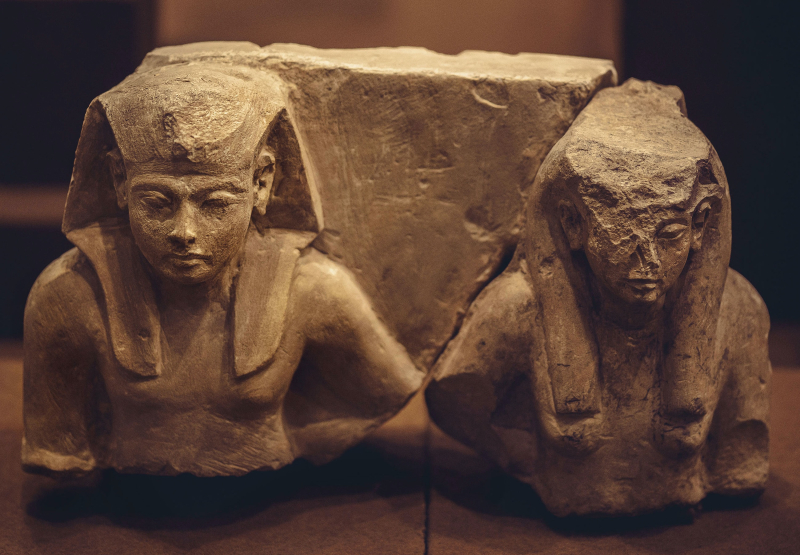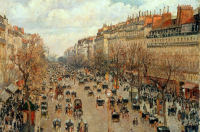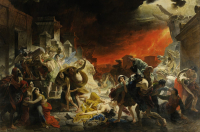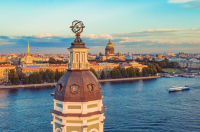Mummy of the priest Pa-di-ist, 10th century BC
Many visitors come to the Hermitage to see one of its, perhaps, most eerie artifacts – a 3,000-year-old mummy. The mummy, identified as Pa-di-ist, a male priest, is exhibited lying down in a carefully secured bulletproof glass casket in the museum’s Hall of Ancient Egypt. Though not the only mummy in the collection, Pa-di-ist attracts the most attention from visitors, especially after his alleged resurrection: it was said to move its arm once – however, no indications of life have been spotted since.
Where: The Winter Palace, room 100
The Litta Madonna by Leonardo da Vinci, mid-1490s
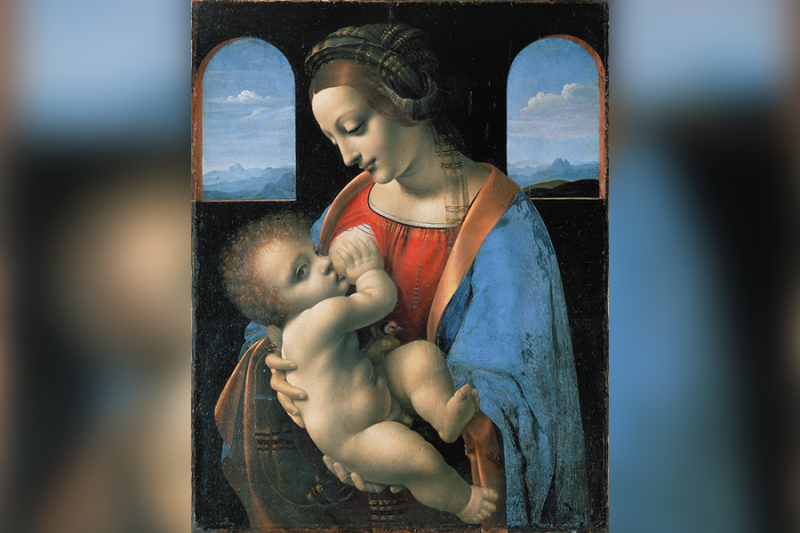
The Madonna Litta (ca. 1490). The Hermitage Museum, St. Petersburg. Credit: Hermitage Torrent / CC-PD-Mark / Commons Wikimedia
Other crown jewels to be enjoyed at the museum are Madonnas, particularly The Madonna and Child (The Litta Madonna). This work of art, depicting the Virgin Mary nursing the infant Christ, is generally credited to Leonardo da Vinci, despite being unsigned. Its second name, in its turn, originates from the Milanese noble House of Litta, who had owned the painting for years before it was purchased by the Russian Tsar Alexander II for the museum.
Where: The Great (Old) Hermitage, room 214
The Return of the Prodigal Son by Rembrandt, ca. 1668
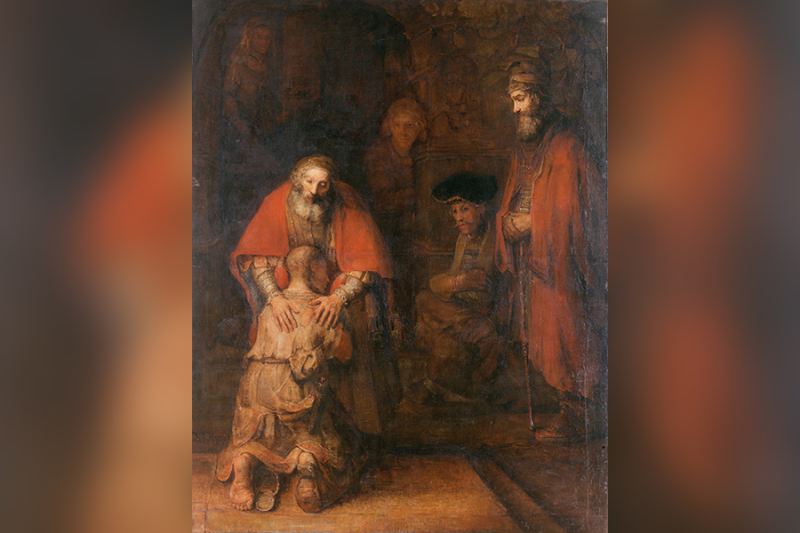
The Return of the Prodigal Son by Rembrandt (ca. 1668). The Hermitage Museum, St. Petersburg. Credit: Hermitage Torrent / CC-PD-Mark / Commons Wikimedia
The Return of the Prodigal Son is a monumental oil painting by the Dutch painter Rembrandt van Rijn. It illustrates a parable in Luke's Gospel, in which a son returns home after going astray and finds himself in the arms of his father. Often regarded as Rembrandt’s swan song, the drawing is thought to represent the author’s professional and personal life alike. Also on view is Danaë, another striking work by the artist, which had been seriously vandalized in 1985 and was only put back on display 12 years later, after extensive restoration.
Where: The New Hermitage, room 254
The Peacock Clock, 1766-1772
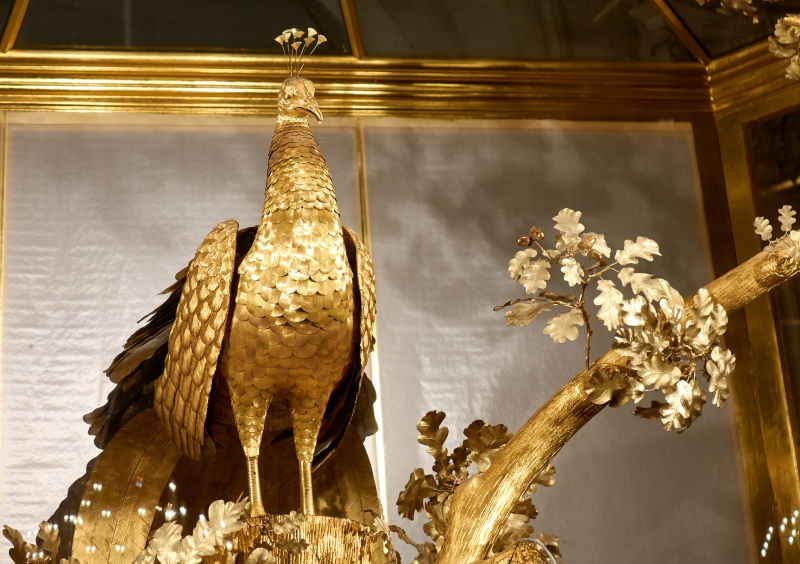
The Peacock Clock. Credit: Michael Shilyaev / CC BY-SA 4.0 DEED / Commons Wikimedia
One of the collection's gold (or gold-plated, to be exact) pieces is the exquisite Peacock Clock, which was made for Catherine the Great by the British artisan James Cox. The three-meter-tall clock features figures of life-sized animals in gilded bronze: a peacock, a cockerel, an owl, and squirrels. When set in motion, the clock's inhabitants astonish visitors with a spectacular show of ringing bells, lifelike motions, and even a cockerel call.
Where: The Small Hermitage, room 204
Big Kolyvan Vase, 1831-1843
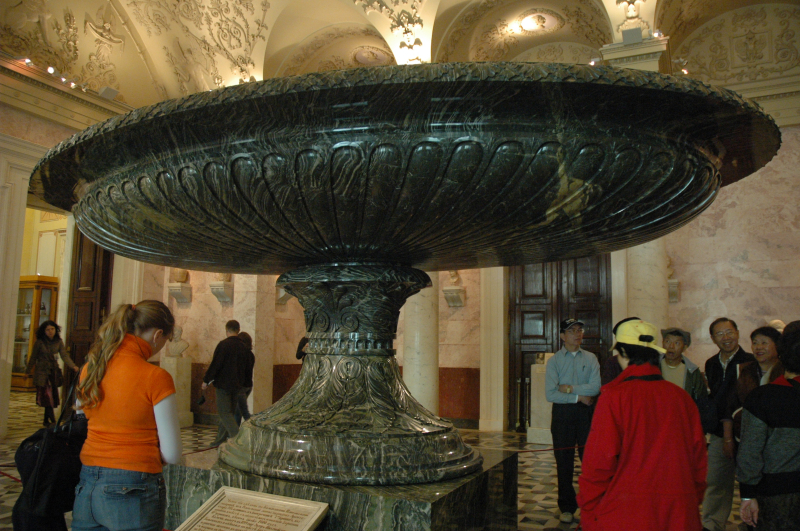
Big Kolyvan Vase. Credit: 林高志 / CC-BY-SA-4.0 / Commons Wikimedia
Big Kolyvan Vase isn’t dubbed the Tsaritsa (Queen) of Vases for nothing: it weighs around 19 tons and stands 2.5 meters high. The vase was made from greenish jasper by Altai stone-cutters who had worked on it for 15 years so that it could then be transferred to and installed in the New Hermitage, which was still under construction at that moment. It’s no wonder that the vase has become one of the official symbols of the Altai Krai; it can even be seen on its flag and coat of arms.
Where: The New Hermitage, room 128
See here for more ideas on what to see at St. Pete’s museums on your next cultural outing.
